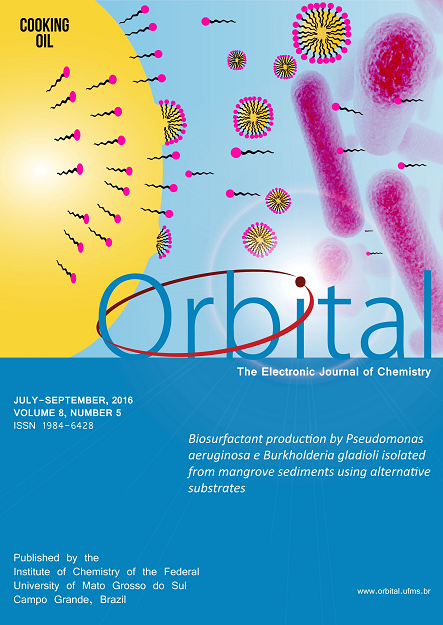- tert-butylhydroquinone,
- butylatedhidroxyanisole,
- electrochemical activation,
- carbon paste electrode
Copyright (c) 2016 Orbital: The Electronic Journal of Chemistry

This work is licensed under a Creative Commons Attribution-NonCommercial-NoDerivatives 4.0 International License.
Abstract
This work describes the development of a carbon paste electrode, electrochemically activated in a H2SO40.5 mol L-1, detected by TBHQ (tert-butylhidroquinone) and BHA (butylatedhidroxyanisole). The electrochemical techniques of cyclic voltammetry and differential pulse voltammetry were used to characterize the redox process, which occurs in the working electrode’s surface. The electrochemical impedance spectroscopy was used to characterize the influence of electrochemically activation in the electrical properties of the electrode-solution interface. The obtained results showed the activation increases the catalytic activity of the carbon paste electrode, verified by a current oxidation peak increase of the both TBHQ and BHA. The increase in the catalytic activity was due to improving the electrical properties of the electrode-solution interface. Electrochemical activation decreases the resistance to electron transfer, favoring the oxidation of BHA and TBHQ on the surface of the working electrode. The obtained results showed that carbon paste electrode electrochemically activated can be used in simultaneous detection of TBHQ and BHA.


